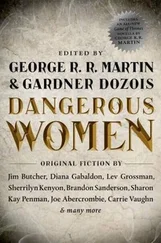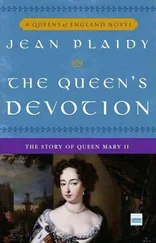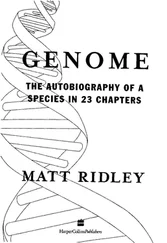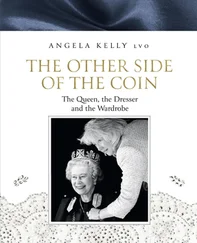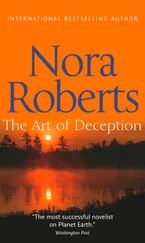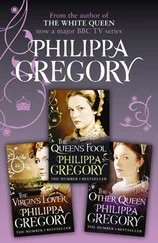The Queen - Matt Ridley
Здесь есть возможность читать онлайн «The Queen - Matt Ridley» весь текст электронной книги совершенно бесплатно (целиком полную версию без сокращений). В некоторых случаях можно слушать аудио, скачать через торрент в формате fb2 и присутствует краткое содержание. Жанр: Старинная литература, на английском языке. Описание произведения, (предисловие) а так же отзывы посетителей доступны на портале библиотеки ЛибКат.
- Название:Matt Ridley
- Автор:
- Жанр:
- Год:неизвестен
- ISBN:нет данных
- Рейтинг книги:4 / 5. Голосов: 1
-
Избранное:Добавить в избранное
- Отзывы:
-
Ваша оценка:
- 80
- 1
- 2
- 3
- 4
- 5
Matt Ridley: краткое содержание, описание и аннотация
Предлагаем к чтению аннотацию, описание, краткое содержание или предисловие (зависит от того, что написал сам автор книги «Matt Ridley»). Если вы не нашли необходимую информацию о книге — напишите в комментариях, мы постараемся отыскать её.
Matt Ridley — читать онлайн бесплатно полную книгу (весь текст) целиком
Ниже представлен текст книги, разбитый по страницам. Система сохранения места последней прочитанной страницы, позволяет с удобством читать онлайн бесплатно книгу «Matt Ridley», без необходимости каждый раз заново искать на чём Вы остановились. Поставьте закладку, и сможете в любой момент перейти на страницу, на которой закончили чтение.
Интервал:
Закладка:
ORNAMENTS AND CHOOSINESS
To put it in human terms, we are asking of animals (as we later will of human beings): Are they marrying for money, for breeding, or for beauty? Sexual selection theory suggests that much of the behavior and some of the appearance of an animal is adapted not to help it survive but to help it acquire the best or the most mates.
Sometimes these two—survival and acquiring a mate—are conflict-ing goals: The idea goes back to Charles Darwin, though his thinking on the matter was uncharacteristically fuzzy: He first touched on the subject in On the Origin of Species but later wrote an entire book about it: The Descent of Man and Selection in Relation to Sex:'
Darwin 's aim was to suggest that the reason human races differed from one another was that for many generations the women in each race had preferred to mate with men who looked, say, black or white. In other words, at a loss to explain the useful-ness of black or white skin, he suspected instead that black women preferred black men and white women preferred white men—and posited this as cause rather than effect: Just as pigeon fanciers could develop breeds by allowing only their favorite strains to reproduce, so animals could do the same to one another through selective mate choice.
His racial theory was almost certainly a red herring,' but the notion of selective mate choice was not: Darwin wondered if selective "breeding" by females was the reason that so many male birds and other animals were gaudy, colorful, and ornamented.
Gaudy males seemed a peculiar result of natural selection since it was hard to imagine that gaudiness helped the animal to survive: In fact, it would seem to be quite the reverse: Gaudy males should be more conspicuous to their enemies.
'
THE PEACOCK S TALE
::: 135 :::
Taking the example of the peacock, with its great tail decked with iridescent eyes, Darwin suggested that peacocks have long tails (they are not actually tails but elongated rump feathers that cover the tail) because peahens will mate only with peacocks that have long tails. After all, he observed, peacocks seem to use their tail when courting females. Ever since then the peacock has been the crest, mascot, emblem, and quarry of sexual selection: Why should peahens like long tails? Darwin could only reply: Because I say so. Peahens prefer long trains, he said, because of an innate aesthetic sense—which is no answer at all. And peahens choose peacocks for their tails rather than vice versa because, sperm being active and eggs passive, that is usually the way of the world: Males seduce, females are seduced.
Of all Darwin's ideas, female choice proved the least persuasive: Naturalists were quite happy to accept the notion . that male weapons, such as antlers, could have arisen to help males in the battle for females, but they instinctively recoiled at the frivo-lous idea that a peacock 's tail should be there to seduce peahens.
They wanted, rightly, to know why females would find long tails sexy and what possible value they could bring the hens: For a century after he proposed it, Darwin 's theory of female choice was ignored while biologists tied themselves in furious knots to come up with other explanations. The preference of Darwin 's contempo-rary, Alfred Russel Wallace, was initially that no ornaments, not even the peacock 's tail, required any explanation other than that they served some useful purpose of camouflage. Later he thought they were the simple expression of surplus male vigor. Julian Huxley, who dominated the discussion of the matter for many years, much preferred to believe that almost all ornaments and ritual displays were for intimidating other males: Others believed that the ornaments were aids to females for telling species apart, so that they chose a mate of the right species.' The naturalist Hugh Cott was so impressed by the bright colors of poisonous insects that he suggested all bright colors and gaudy accessories were about warn-ing predators of dangers: Some are. In the Amazon rain forest the butterflies are color-coded: yellow and black means distasteful, blue and green means too quick to catch.' In the 1980s a new version of
::: 136 :::
The Red Queen
this theory was adapted to birds, suggesting that colorful birds are the fastest fliers and are flaunting the fact to hawks and other predators: I 'm fast, so don 't even think of trying to chase me: When a scientist put stuffed male and female pied flycatchers out on perches in a wood, it was the dull females that were attacked first by hawks, not the colorful males.' Any theory, it seemed, was preferred to the idea of female preference for male beauty: Yet it is impossible to watch peacocks displaying and not come away believing that the tail has something to do with the seduction of peahens. After all, that was how Darwin got the idea in the first place; he knew that the gaudiest plumes of male birds were used in courting females and not in other activities: When two peacocks fight or when one runs away from a predator, the tail is kept carefully folded away.'
TO WIN OR TO WOO
It took more than this to establish the fact of female choice. There were plenty of diehards who followed Huxley in thinking courtship was all a matter of competition between males. "Where female choice has been described, it plays an ancillary, and probably less significant, role than competition between males, " wrote British biologist Tim Halliday as late as 1983: 1° Just as a female red deer accepts her harem master, who has fought for the harem, so perhaps a peahen accepts that she will mate with the champion male.
In one sense the distinction does not matter much. Peahens that all pick the same cock and red deer hinds that indifferently submit to the same harem master both end up "choosing " one male from among many. In any case, the peahens ' "choice" may be no more voluntary or conscious than the hinds ': The peahens have merely been seduced rather than won. They may have been seduced by the display of the best male without ever having given the matter a conscious thought—let alone realized that what they were doing was "choosing: " Think of human analogies. Two caricatured cavemen who fought to the death so that the winner could sling the THE PEACOCKS TALE
::: 137 :::
loser's wife over his shoulder and take her away are at one extreme; Cyrano de Bergerac, who hoped to seduce Roxanne with words alone, is at the other. But in between there are thousands of permu-tations: A man can " win" a woman by competing with other men, or he can woo her, or both.
The two techniques—wooing and winning—are equally likely to sieve out the "best" male. The difference is that whereas the first technique will select dandies, the second will select bruis-ers. Thus, bull elephant seals and red deer stags are big, armed, and dangerous. Peacocks and nightingales are aesthetic show-offs.
By the mid-1980s evidence had begun to accumulate that, in many species, females had a large say in the matter of their mating partner: Where males gather on communal display arenas, a male 's success owes more to his ability to dance and strut than to his ability to fight other males."
It took a series of ingenious Scandinavians to establish that female birds really do pay attention to male plumes when choosing a mate. Anders Moller, a Danish scientist whose experiments are famously clever and thorough, found that male swallows with artificially lenghtened tails acquired mates more quickly, reared more young, and had more adulterous affairs than males of normal length. 12 Jakob Hoglund proved that male great snipe, which display by flashing their white tail feathers at passing females, could be made to lure more females by the simple expedient of having white typing-correction fluid painted onto their tails:" The best experiment of all was by Malte Andersson, who studied the widow bird of Africa. Widow birds have thick black tails many times the lengths of their bodies, which they flaunt while flying above the grass.
Читать дальшеИнтервал:
Закладка:
Похожие книги на «Matt Ridley»
Представляем Вашему вниманию похожие книги на «Matt Ridley» списком для выбора. Мы отобрали схожую по названию и смыслу литературу в надежде предоставить читателям больше вариантов отыскать новые, интересные, ещё непрочитанные произведения.
Обсуждение, отзывы о книге «Matt Ridley» и просто собственные мнения читателей. Оставьте ваши комментарии, напишите, что Вы думаете о произведении, его смысле или главных героях. Укажите что конкретно понравилось, а что нет, и почему Вы так считаете.

